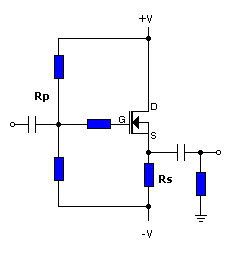c12mech
100+ Head-Fier
- Joined
- Mar 22, 2010
- Posts
- 225
- Likes
- 11
double post deleted
| Originally Posted by c12mech /img/forum/go_quote.gif Would there be any issues with mounting the power supply in the enclosure and just wiring in direct instead of using the plug? I'm not sure about heat dissipation of the PS. |
| Originally Posted by the_equalizer /img/forum/go_quote.gif Yes, I do own a MiniMAX. I'll respond in PM with my impressions on these two amps. cheers! |

| Originally Posted by m11a1 /img/forum/go_quote.gif I'm sure there are others who wonder the same question. 
Cheers! |


| Originally Posted by blippster /img/forum/go_quote.gif The 17EW8s showed up, so popped them in to the amp. Didn't switch the bias resistor though for lack of time. Initial impressions are that they are a definite improvement over the 12AU7s previously in there 
Someone please correct me if I'm wrong, but I don't think the tubes would be too affected by running them on 12V heaters, since effectively that's just dissipating less power in the heaters. The extra 7V drop over the MOSFETs is balanced out by a drop in the bias current from 150mA to ~105mA, so the amp still runs much cooler, and I'm not a fan of huge bias currents anyway. Perhaps that may (or not) compromise sonically, but (imo) 105mA is still plenty, especially with comparatively high-Z Sennheisers. |
| Originally Posted by the_equalizer /img/forum/go_quote.gif Oh wow... this little circuit doesn't cease to amaze me.... so it works without changing the gate bias resistors!? I'll have to try it myself this evening! I don't think the tube suffers any damage by running it's heater with a lower voltage. Did you measure those 12 volts across the tube heaters? |

| Originally Posted by timmyGCSE /img/forum/go_quote.gif so does that mean the 17EW8 tubes can be used in place with no change? |
| Originally Posted by blippster /img/forum/go_quote.gif Just measured with the DMM. I get a reading of 13.7V across the heater pins with the 17EW8, and ~13V for the 12AU7. Looks like they were being run a bit hard. 
I think getting the exact voltage shouldn't matter too much in terms of getting the tube to operate, as long as the heaters are burning enough power to get the electrons free of the cathode (and of course, not pushing them hard enough to wear out prematurely). |
| Originally Posted by the_equalizer /img/forum/go_quote.gif <snip> You see, what I'd thought would happen was that the MOSFET source would sit at ~18 volts (the 17EW8 tube heater voltage) and, with R2, R8 = 390 K the MOSFET gate would sit at ~17 volts; so the MOSFET wouldn't turn on. But what's happening is that the MOSFET source voltage, sitting over the tube heater, get's 'clampled down' 4 volts below the gate voltage (~17 volts) thus the voltage you read across the 17EW8 heater, and thus the MOSFET turns on and the amp works! Very nice ! |


| Originally Posted by the_equalizer /img/forum/go_quote.gif That seems to be the case, indeed. |




